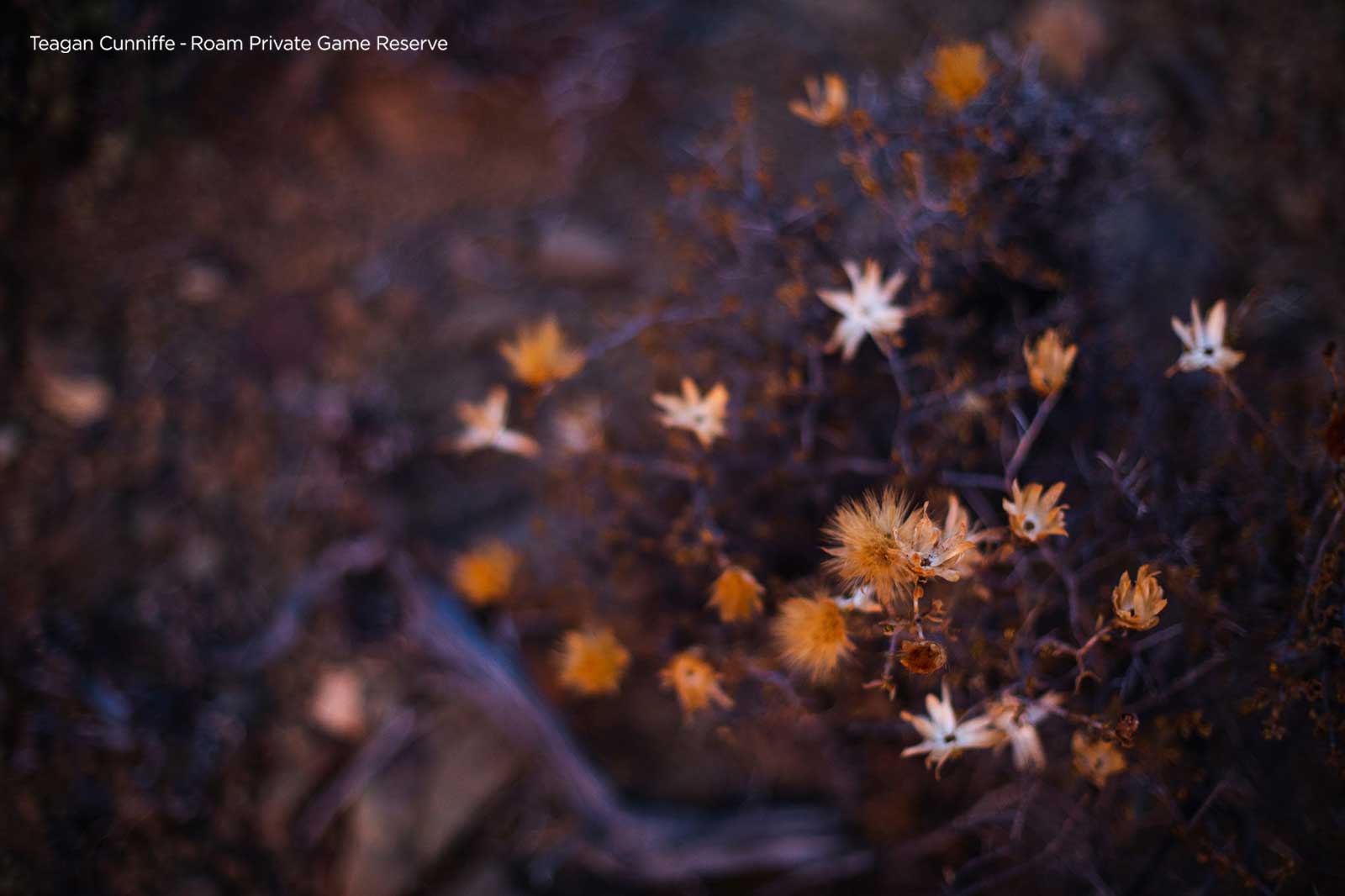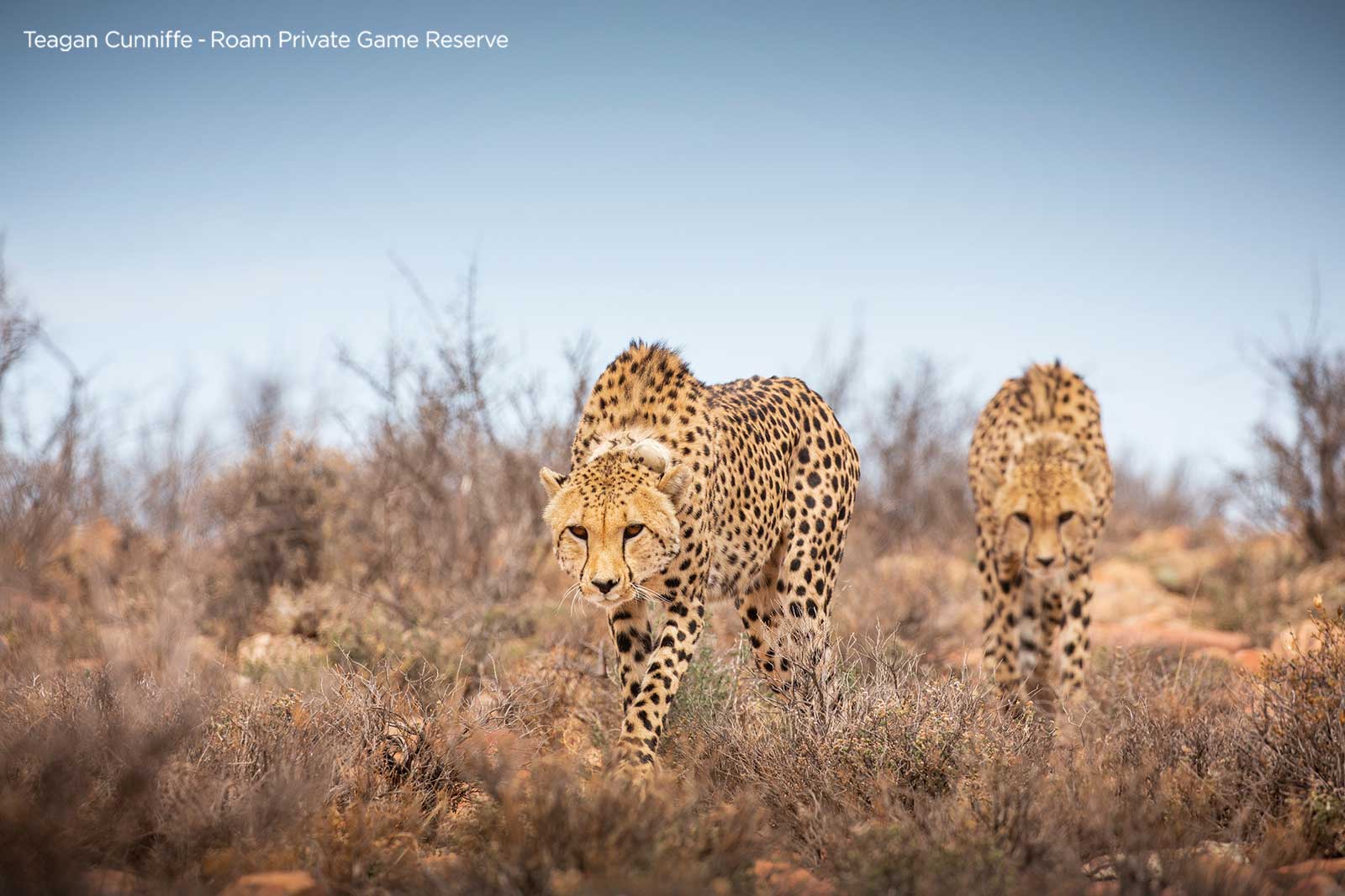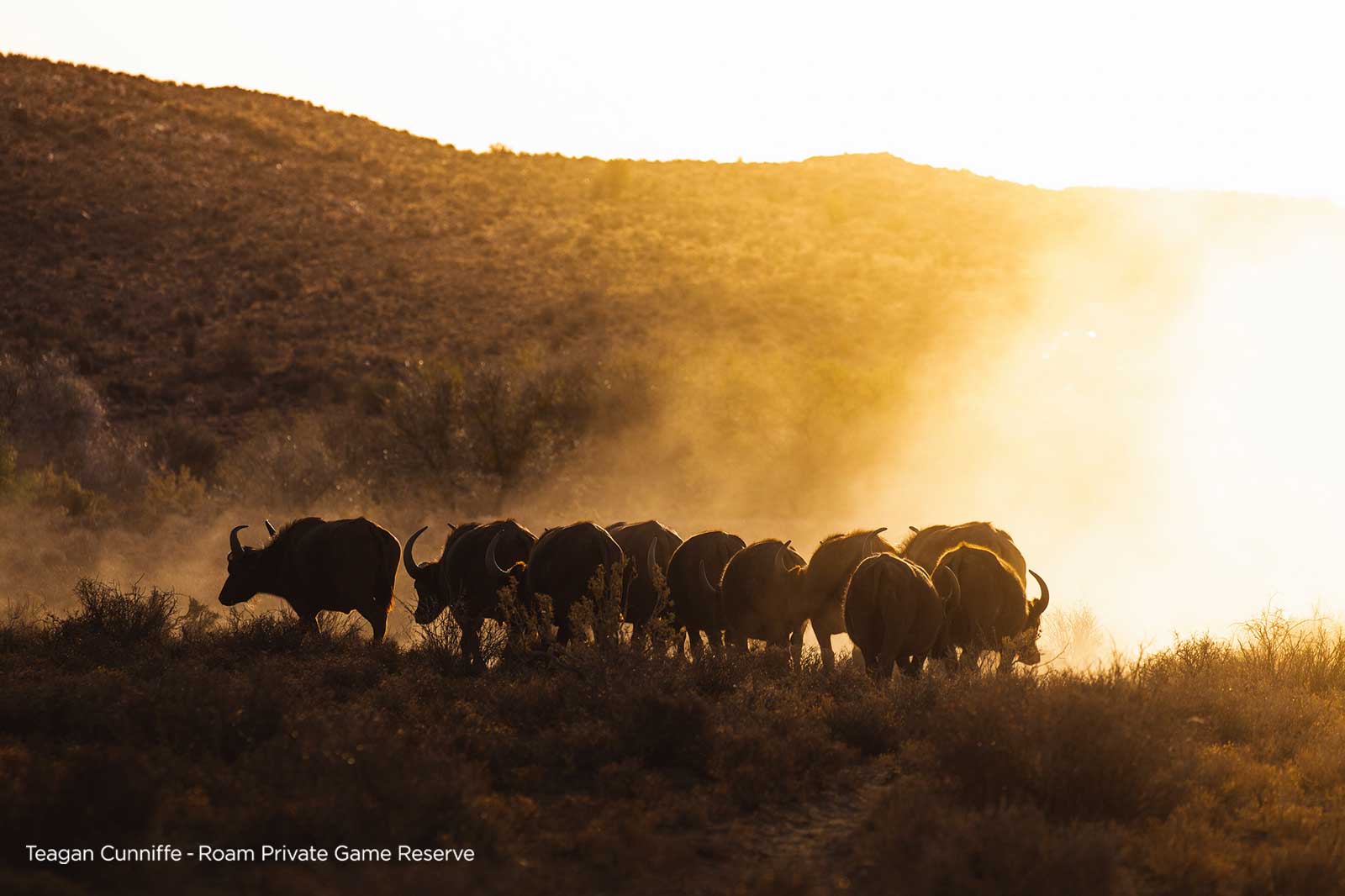Roam Private Game Reserve in the Western Cape’s Great Karoo combines a traditional safari experience with an opportunity to give-back. The team at Roam encourage guests to get involved in contributing to the overall success of their reserve by actively participating in a choice of activities and conservation research projects currently underway. This is a conscious safari experience where the perfect balance between a luxury safari holiday and conservation experience is achieved.
The safari experience is NOT a volunteer program, and it’s not your average safari experience. It’s a way to enjoy a luxury safari while playing a part in conservation. The overall experience will bring you closer to the wild and ensure a greater understanding of the various behind-the-scenes jobs vital to sustaining a reserve.
Roam Private Game Reserve is located on 5000 hectares of malaria-free scrubveld, and is home to a recently introduced buffalo herd, and a coalition of cheetah. There are also over 240 species of bird in the Great Karoo, 13 species of antelope, and small predators such as colonies of meerkat, black-backed jackal, caracal, Cape fox and the bat-eared fox.
Below are the various aspects that you might become involved in when you sign-up for a conscious safari at Roam Private Game Reserve.
Monitoring Flora and Fauna
Roam is home to a wealth of wildlife and plant life. The overall health of the reserve needs to be monitored and effectively managed on a regular basis. Guests will have the opportunity to become involved in a few of the already established and long-term monitoring programs available. Monitoring processes include anything from establishing corridors of vegetation to monitoring species composition, creating transects along riverbeds, and making exclusion plots. The flora programs are generally conducted every 2 weeks.
There are also animal monitoring programs available, each of which fulfils a different objective. High profile animals such as buffalo and cheetah, will be monitored regularly while more common species less frequently. Tracking cheetah will be done using telemetry, and guests will help to observe and document their behaviour.
You will learn basic animal tracks and signs that various species leave behind for us to interpret to help find them. You might even be able to help set up camera traps in the wild, count tortoises, help with meerkat habituation, and get involved in a host of other monitoring activities needed.

Bird Ringing
Bird-ringing is a method of capturing, tagging and releasing birds into the wild. Guests will be involved in helping to release birds into the wild after the necessary data has been captured. The data is sent to a central database, and throughout the bird’s life historical data is recorded to track things like breeding behaviour, migratory patterns and how wide a species’ territory is.

Animal Feeding
Roam wants the reserve to function as naturally as possible, but there are occasions when the team needs to supplement feed for the bulk grazers. Feed is placed in various locations throughout the reserve. The team at Roam says, “The supplement feeds consist of lucern and teff, which need to be fed in the correct volume and ratio. Supplement feeding also offers us the opportunity to monitor various animals at various points from time to time and ensure they are still happy and healthy.”

Animal Welfare
It is the aim of the reserve to intervene as little as possible and let nature take its course. However, the team does need to intervene when there are sick or injured animals, or ones that need to be relocated. When it comes to animal welfare there are no set projects and participation cannot be guaranteed. When there is a need for game capture, or to treat sick animals, then guests are given the opportunity to become involved.


